Prospects for the domestic non-nuclear submarine fleet. What will happen to the 677 Lada project?
So, a year ago, the foundation of our submarine non-nuclear forces was 15 diesel-electric submarines of the 3rd generation of Project 877 Halibut, of which, according to the author, 12 were part of fleet, and 3 - under repair. Unfortunately, the author was too optimistic in his assessment. The fact is that two diesel-electric submarines of the Pacific Fleet, "St. Nicholas the Wonderworker" and "Nurlat", which he considered "ready for the campaign and battle," were in fact waiting for repairs at the Dalzavod. Moreover, one of the diesel-electric submarines, which he considered to be being repaired, apparently also ended up in a crap. We are talking about the submarine "Yaroslavl", which served in the Federation Council.
The ship was planned to be supplied for medium repair with modernization back in 4 2016 quarter, but apparently due to various crises and revisions of the budget of the Ministry of Defense, there was no money for it. As a result, diesel-electric submarines were decommissioned, but repairs to Yaroslavl have not yet begun.
Thus, in fact, at the beginning of 2018, the Russian Navy had 10 "Paltus" in the ranks, 3 in the sludge and 2 - under repair. What has changed?
From the good: in March 2018, the repair of the Dmitrov diesel-electric submarine was completed and it returned to the Baltic Fleet. The rest of the situation predictably worsened - one of the oldest boats of this type, the Vyborg, left the system and was waiting for the conversion to the museum ship. That we will add museum ships is just fine, but even the failure of the old boat, given their overall shortage in the Russian Navy, is of course upsetting.
Thus, for today, the 14 “Halibus” is left, of which the 3 of the oldest boats (put into operation in 1988) are in a sludge, which they are unlikely to ever leave. Moreover, their only "same age", Vyborg, which until recently remained a part of the BF, also "retired." Most likely, that on this story The “original” 877 project to which all these 4 ships in the Russian Navy belonged should be considered complete: the remaining boats that are part of the fleet are modifications of the 877 project (877LPMB, 877М, 877EPМ and 877В).
It can be said that in the 2019 the fleet has 11 “Halibus”, of which 10 are in service: 6 serve in the Far East, 3 in the Northern Fleet and 1 in the Baltic. The Black Sea “Alrosa” is being repaired in Sevastopol, and its return to the fleet is expected in 2019. Everything would have been fine, but it was originally planned to complete the repair in 2015, then in 2017, then in 2018. And now they promise to hand over the boat this year. Well, let's hope that this promise will still be fulfilled, all the more so because the leadership of the Russian Federation has nevertheless indicated the restoration of the shipbuilding capacities of the Crimea as one of the most important tasks - maybe after that something will get off the ground.
If “Alrosa” is still returned to the fleet, it will leave the Black Sea and go to the Baltic Sea so that the total number of diesel-electric submarines of the Baltic Fleet again, as before the departure of Vyborg “retired”, is 2 units. Then the Black Sea Fleet will completely lose the diesel-electric submarines of the 877 project, but this is just unimportant, because during the 2014-16 period. He received on arms 6 more modern and powerful ships project 636.3. In essence, today the Black Sea Fleet is the strongest in the diesel-electric submarines among the 4-s military fleets of the Russian Federation.
In one iteration of the HPN 2011-2020, the construction of another 6 diesel-electric submarine of the Pacific Fleet 636.3 project was announced. The need for this was realized after it became clear that the serial construction of the latest XDUMX diesel submarines of the 4 project’s Lada generation could not be deployed before the start of the 677s, and perhaps never at all, because the headboat faced a huge number of problems that absolutely did not want to be solved.
As is known, the 636.3 boats, for all their merits, were modernized Varshavyanka, which themselves were the export version of the Paltus. These ships are better and stronger than the remaining diesel-electric submarines of the 877 project, but of course they are no longer at the cutting edge of military technological progress. It is legitimate to say that the boats of the 636.3 project are morally obsolete. Nevertheless, it is obvious that the "Halibut" is not so long left to be in the ranks, because even the most "young" boat of this type, the "Mogocha", has been serving for a quarter of a century. And, since the serial construction of the 677 project did not work out, the resumption of the production of 636.3 diesel-electric submarines for the PF was completely uncontested.
However, plans are one thing, and their implementation is completely different. It became apparent that the giant planned spending on LG 2011-2020. in the amount of 20 trillion rubles, most of which should be “mastered” in the period of 2016-2020, the country is not capable of. As a result, the leadership of the Russian Federation was forced to abandon the LG of 2011-2020, replacing it with a new LG of 2018-2027. Unfortunately, the details of the new state armament program have not been disclosed in the wide press; only one thing is known about it - its funding will be much more modest than planned for the previous LG. However, a spoon of honey was also present in the ointment - it was planned to stay at the achieved level, that is, the cost of LG IO 2018-2027. it was calculated that it was worse than it is now, the Armed Forces of the Russian Federation will not be funded.
However, since we were talking about funding restrictions, then, naturally, there were concerns about the fate of the 6 diesel-electric submarines of the 636.3 project for the Pacific Fleet. Moreover, despite the obvious release of the production capacity of the Admiralty Shipyards, after the construction of the Black Sea diesel-electric submarines, the entire 2 of the new ship was laid. It is about the B-274 "Petropavlovsk-Kamchatsky" and about the B-603 "Volkhov", the official bookmark of which was held on 28 July 2018. The author of this article seriously began to fear that the two boats would be limited to ...
But it seems that everything can still end well. So the first one is good news: 28 March 2019. The launch ceremony of the 636.3 head-of-cell diesel-electric submarines for the Pacific Fleet took place.
But the most pleasant thing is that the bmpd blog in the article devoted to this joyful event also said that the construction of the next two diesel-electric submarines of the same project had already begun, and that the ships that received the name "Magadan" and "Ufa", are at the stage of forming blocks and conducting hydraulic tests ". The official bookmark will take place later, in 2019, and bmpd reports that the specified dates are in full compliance with the previously signed contract for the construction of this series of diesel-electric submarines.
Thus, it can be stated that at least 4 DEPTs from 6 planned will still be built and will be part of the Russian Navy. But with two extreme ships of the series, the situation is not so straightforward - it is only known that the fifth submarine is planned to be called “Mozhaisk”, and the name of the sixth ship has not yet been approved, and there is no information about their upcoming laying. But, oddly enough, it sounds, it is quite possible that this is not at all sad, and the most joyful news.
It's all about the progress of the diesel-electric submarines project 677 "Lada".
The above-mentioned “Halibut”, like the “Varshavyanka” created on their basis, were the diesel-electric submarines of the 3-generation, that is, of the same technological level as the American atomic “Los Angeles” and the Soviet “Pikes-B”. At the same time, both "Halibut" and "Varshavyanka", of course, were inferior in their characteristics to their atomic "older sisters": they had a much more modest underwater speed, incomparably lower autonomy, relatively weak sonar complexes ... But for all that "Paltus "And" Varshavyanka "had one but only, but a tremendous advantage: much less noise.
As a result, under certain conditions, the diesel-electric submarines could play the role of a highly efficient “submarine hunter” - patrolling in a given area, “Halibut” was quite capable of detecting “Los Angeles” before the more powerful American Atomic Gunner finds a quieter domestic non-nuclear submarine . And, again, the diesel-electric submarines of 877 and 636 projects, taking advantage of their low noise level, in some situations could attack an enemy ship's order more effectively than the same Schuk-B. In general, our non-nuclear submarines completely deserved the nickname "Black Hole". And besides, the diesel-electric submarines in terms of size and cost are much more modest than the multi-purpose submarine and this, of course, also mattered.
But scientific and technological progress does not stand still. The USSR and the United States have begun to create multi-purpose submarines of the next, 4-th generation: we had it "Ash", in America - "Sivulf", and then "Virginia". Against them, the 3 generation diesel-electric submarines no longer had the former advantage (and most likely did not have any advantage at all), so the question of creating a new type of diesel-electric submarines, whose combat capabilities allowed it to occupy the same niche in relation to the Sivulfs, was on the agenda. and “Ash”, which “Halibut” occupied in relation to “Los Angeles” and “Schuk”.
Unfortunately, the creation of diesel-electric submarines of the 4 generation in the USSR was started with a certain delay: work on the 677 “Lada” project was started only in 1987. This predetermined all subsequent complexities of the project. MAPL "Ash" we began to develop in 1977, and the collapse of the USSR, it was largely finished, so that in 1993, was able to lay the lead boat of the series. But the work on “Lada”, obviously, was still at an early stage in 1991, which was why it was created mostly already in “dashing 90” with all the resulting “joys”, including chronic underfunding, the collapse of cooperative chains and .d etc.
The diesel-electric submarine "Lada" contained a huge amount of innovations, it was about creating a fundamentally new ship. Smaller than displacement of the 636 project diesel engines, smaller crew size, but at the same time maintaining the same weapons. Single-hull construction (the second building remained only in the aft part of diesel-electric submarines), new electric motor, GAK, BIUS, new coating, new means of reducing noise, similar in principle to those used on “Ash”, new batteries that should provide submerged distance 650 miles on economic 3 nodes versus 400 miles from Varshavyanok.
The head boat "St. Petersburg" was laid in 1997, and could be put into operation only in 2010, but the very first tests showed that almost nothing of the main innovations works as it should.
The combat information system "Li" messed up. Wonderful, in theory, the SJC “Lira”, which included itself not only a classical antenna placed in the bow of the boat, but also additional side ones located directly on the DEPL hull, as well as a towed antenna, did not meet the stated characteristics. The newest type of rechargeable batteries, which were supposed to provide the Lada with more than one and a half times superiority in range, for some reason gave out power at the level of 60% of the planned one.
Hopes that all these children's diseases, which will be quickly corrected, were not justified. “St. Petersburg” was finally handed over to the fleet, but was in trial operation, and the two serial boats laid down behind it, the Kronstadt and Velikiye Luki, were generally stopped by construction and re-installed on the revised 677 project in 2013 and 2015 yy respectively. Nevertheless, even by this time there was no clarity as to how we managed to overcome the problems that plagued St. Petersburg. On the one hand, there were separate reports on certain successes of St. Petersburg. But on the other hand, in 2016, RIA Novosti reported with reference to an unnamed representative of the Russian Navy that the fleet command decided to abandon the further construction of the diesel-electric submarine of the 677 project. On the one hand, of course, the “unnamed representative” is not the most authoritative source, but there was also a much more serious symptom indicating the failure of the 677 project.
The fact is that 7 in September 2016 was contracted to build the “magnificent six” XDUMX diesel-electric submarines for the Pacific Fleet. It is clear that “to conclude a contract” and “build” are fundamentally different concepts, but the fact is that if in 636.3 the problems of the lead ship of the 2016 project were resolved, or at least there was a firm belief that the 677D serial boats would be released to an acceptable level, then what was the point of building for the Pacific sailors morally obsolete diesel-electric submarines of the previous project? Although the diesel-electric submarines of the 677 project represent a deep modernization of the Warsaw-Wyangs, by their fighting qualities they are, of course, not the generation 636.3 boats.
All this indicated that a bold cross was put on the Ladakh, and therefore periodically pop-up messages that the fleet might order another 2 of this type of boat that flashed in 2017 were not taken seriously. In addition to the above, there were two more reasons. Firstly, these news, as a rule, did not come from the representatives of the Navy, but from the leaders of the Admiralty Shipyards JSC, who could have given the wishful thinking. And secondly, at that time, the new HPV 2018-2027. It has not yet been approved, so any thoughts about what exactly the fleet will order in the end, were more fortune telling on the coffee grounds than any reliable information.
True, the deputy commander of the Russian Navy V. Bursuk spoke about “Ladakh”: according to him, the fleet was still going to order the 677 project boats in a large series. But here, apparently, it was about those happy times when an air-independent power plant would be created for the Lada. Given the impasse in which our designers found themselves trying to design such an installation, the words of the castle fleet looked like a polite euphemism for the phrase “When the cancer on the mountain will whistle”. This was all the more unpleasant because, according to some sources, St. Petersburg gradually got rid of its shortcomings. So, "on the Internet," in July 2018, the news appeared, with reference to the words of the USC head, that the prolonged trial operation was coming to an end, and that the lead ship of the 677 series would be handed over to the fleet in 2019.
However, 20 September 2018, there were as many as three interesting events. Firstly, the 2 th series of diesel-electric submarines of the series, pledged for the 677 project in 2005, was launched, suspended by construction in the 2009, and repotted by the 677 project in 2013, it is about the K-586 Kronstadt. Secondly, Igor Vilnit, Director General of the TsDB MT Rubin, delivered a rather unexpected message. In his words, the diesel-electric submarines "St. Petersburg" in the end not only confirmed all the declared characteristics, but even surpassed them. And finally, thirdly, the General Director of Admiralty Shipyards JSC once again announced the construction of two more diesel-electric submarines on the 677 project, and according to his words, the signing of the contract is planned for 2019.
Of course, doubts still remain - do not the general directors of Rubin and Admiralty Shipyards give what they want to do? If you recall, for example, how many times I. Vilnit spoke about the “well, almost completely finished” anaerobic facility, which was developed by the TsKB, then optimism about the fate of the 677 project decreases sharply and multiplely.
But 28 of March of this year, Igor Mukhametshin, deputy commander-in-chief for armaments of the Russian Navy, said that the production of the Lada diesel-electric submarines of the 677 project (probably, it’s all about 677D) will be resumed. And not in the bright capitalist future, but in the very near future: according to I. Mukhametshin, documents for the conclusion of a contract are being prepared by the relevant specialists of the military department.
It is clear that you will not be fed up with promises, and that in a good way you should begin to rejoice after the completion of the contract for the construction of a series of diesel-electric submarines of the 677 project (677D), or at least the completion of the trial operation of St. Petersburg. Nevertheless, in view of the above, it can be said that the status of the program of non-nuclear submarines of the 4 generation inspires cautious optimism.
And further. Recently, a number of articles devoted to anaerobic plants appeared at VO, under the influence of which a part of a respected audience could get the impression that classic diesel-electric boats are completely outdated and are unable to operate successfully today in high-intensity conflicts. But in reality this is certainly not the case. Of course, submarines with VNEU will have certain tactical advantages. But the combat potential of domestic "black holes" has always been rated highly, and the next generation ship, having the best HOOK, less noise and many other advantages, will be an extremely dangerous underwater adversary, even having a classic diesel-electric power industry. Especially if the work on lithium-ion, or other high-capacity batteries will be crowned with success, which will significantly increase the autonomy of domestic diesel-electric submarines.
In general, the immediate future of our non-nuclear submarine fleet looks like this. Apparently, in the Baltic our submarine forces will be represented by two “Halibuts”, “Alrosa” and “Dmitrov” - both of them have been repaired and modernized (more precisely, the “Alrosa” is still in process) and it can be hoped that with proper maintenance the ships "stretched" another 8-10 years or so. The Black Sea Fleet, which has recently received 6 of the new Warsawwenk project of 636.3, will not receive replenishment by ships of the same class in the foreseeable future. The Pacific Fleet, which incorporates the 6 “Paltus”, is likely to be gradually reequipped on the 636.3 new construction - that is, as the “Warsawyon” from the “Admiralty Shipyards” arrives, the old 877 boats will be removed from the fleet. Although we can not exclude the fact that some of them will still remain in service, and for some time the total number of diesel-electric submarines of the Pacific Fleet will exceed today's 6 units. New fleet will also be replenished with the Northern Fleet - today it has only 3 “Halibut” and “Saint Petersburg”. Most likely, both boats of the 677 project, which are currently under construction, will go exactly to the north in order to bring the total number of diesel-electric submarines to 6 units. And, most likely, the new diesel-electric submarines of the same project will also go to the Federation Council in order to form a compound of the same type 6 boats there. However, it cannot be ruled out that the existing contract for 6 submarines of the 636.3 project for the Pacific will be reduced to 4 units, and instead of the remaining two, the newest Lada will be supplied to the Pacific Fleet.
Thus, it can be assumed that “under the curtain” of the existing GPT “Paltusa” will completely leave the Russian Navy, but the total number of EPTs will even increase: if today, in fact, we have 11 “Paltusov”, 6 “Varshavianok” and one “Lada”, which has not yet come out of trial operation, then by 2028 we can expect 8 “Lada” (2 at BF, and 6 at SF) and 12 “Varshavyanok” (according to 6 at BSF and TF). Of course, we need a much larger number of them, especially against the backdrop of a landslide reduction of MAPL, but it is doubtful that there will be funds for this. Still, for the implementation of this program, we need to build five new diesel submarines of the 677 project and four 636.3 over the next decade, not counting the commissioning of two diesel submarines of the 677 project and 636.3, which are currently at different stages of construction.
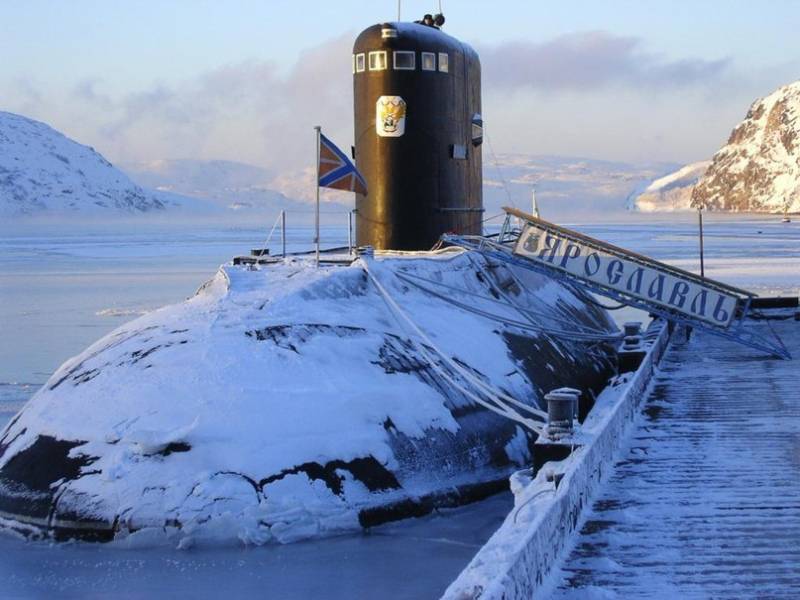
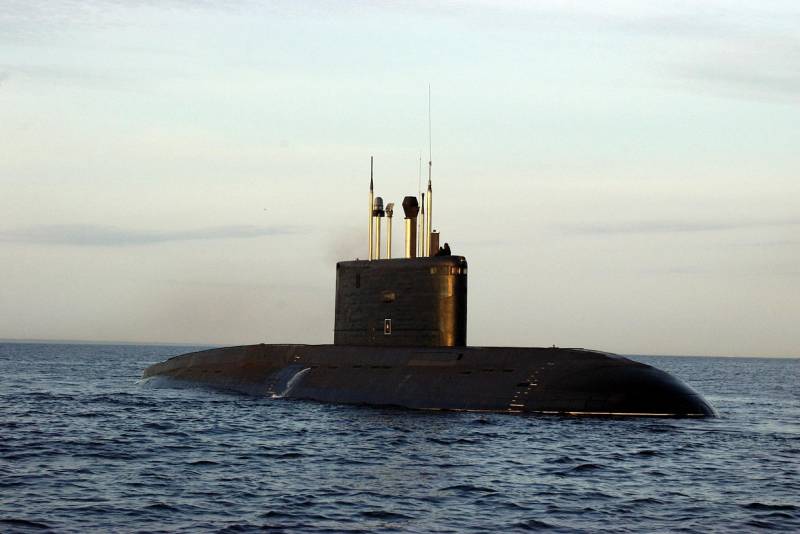
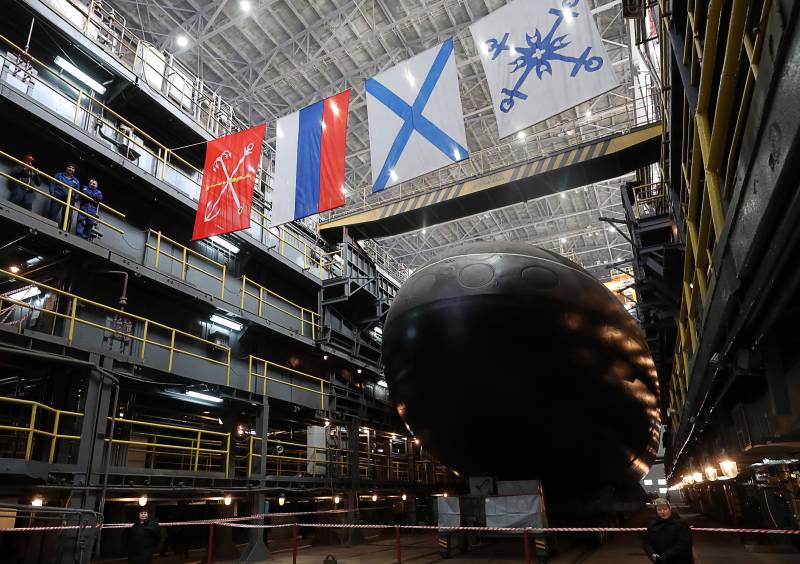
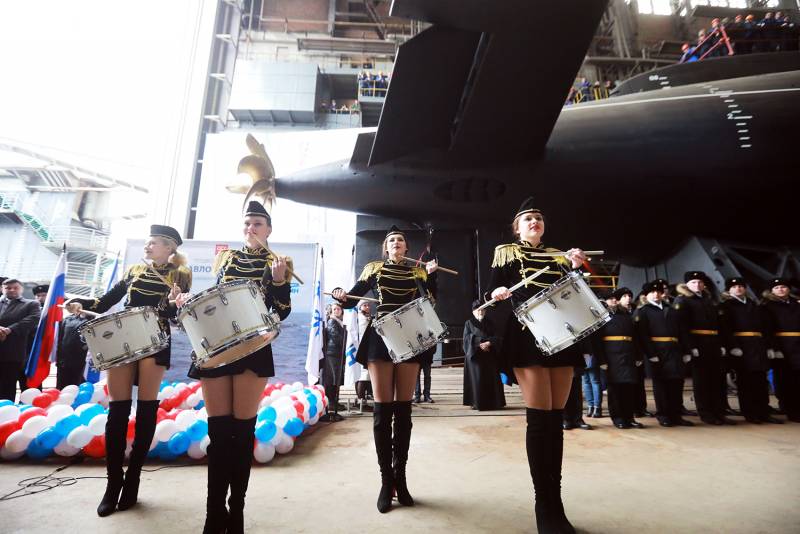
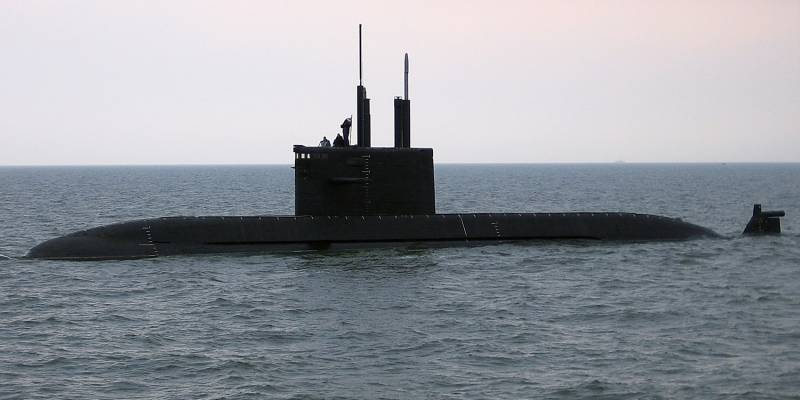
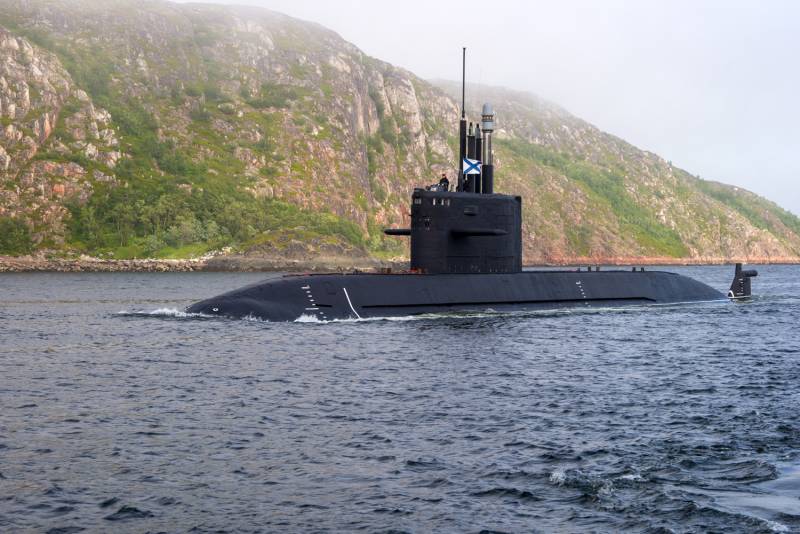
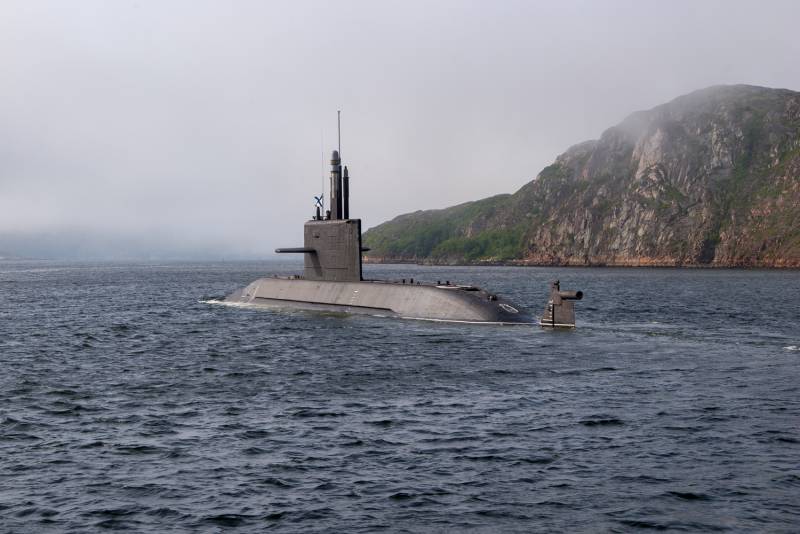
Information